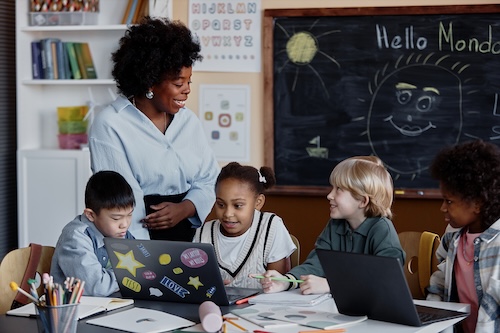Key points:
While the recent months have been a flurry of news around education, we’re becoming distracted from the very real challenges students are facing in the classroom. Because when speaking with parents, most still express concerns about their child’s overall academic growth and social development in the wake of the pandemic. Those concerns are valid, and only heightened by uncertainty around protections for students with disabilities. Meeting the needs of students and families will take an intentional approach to confronting the complexities of the current moment.
Families and educators agree academic recovery must remain a priority. But there is more to the story here. As the nation still grapples with learning loss, many parents are unsure of the root of that problem. Until we can answer that, we’re unable to implement solutions that really matter in our day to day: helping all students learn. The question we should really be asking is: Are students experiencing temporary setbacks or deeper learning disabilities that require long-term support? Without this consideration, we risk dismissing very real learning challenges as generalized learning loss and may over-identify academic struggles as something requiring structural intervention. Schools must be able to differentiate between learning loss and learning disability if we want to effectively respond to both scenarios.
But getting at the root of these issues takes expertise and resources, and schools don’t always have enough coverage to meet the presenting needs. As schools grapple with our new realities, we must identify better ways to assess, diagnose, and address learning challenges.
Any parent or teacher knows the impacts to learning are alarming. From my time as a school counselor, school psychologist, and educational advocate, I’ve experienced firsthand the need for more targeted resources for students with learning disabilities. Throughout my various roles, and as a parent myself, I’ve also seen how times of great challenges can also generate solutions that we didn’t know existed.
When there is universal learning loss, we must step back to examine scalable programming. That includes a review of school-wide curriculums. The number of students receiving services under the Individuals with Disabilities Education Act (IDEA) increased by nearly one million students in the last decade, according to the National Center for Education Statistics. That amounts to 15 percent of all public school students. Given the unique challenges over the last five years, more students may benefit from both intervention and evaluation. This disproportionately affects individuals living in low-income communities, with less access to educational resources and thus more ground to make up.
According to a survey from October 2024, half of parents said they believe their child was set back by the pandemic. What’s more, 85 percent of parents say they notice something worrying about their child once a month, from grades to new behaviors to concerning comments from their child. The data begs the question: How can schools meet the growing demand for expanded resources?
The good news is that technology can drive solutions. Remote assessment and therapy tools can provide more accurate and scalable supports to help identify and meet students’ needs. Practitioners working remotely can extend their reach to students from isolated communities, such as rural Kentucky to urban areas with staff-shortages like Chicago. Neither your zip code nor socioeconomic status should determine the resources a child receives.
Perhaps most importantly, we are able to meet students where they are. This isn’t solely in terms of geography, but also what makes them comfortable. In my experience, students have the prerequisite understanding to find success within a remote assessment format. In fact, students are equipped with the skills to be successful in virtual interactions. As professionals, we must be open to this paradigm shift. If we can overcome our reservations, we can offer more students the resources they need in an equally good approach as compared to traditional delivery methods. Technology based virtual interventions are an excellent solution for the vast majority of students.
The pandemic highlighted the value of more efficient evaluations and services through telepractice. We’re finding these modern solutions are scalable. At least 16 of the 20 largest U.S. public school districts offer online sessions for millions of students. This should give us hope.
In this moment of immense academic need and legitimate parent concern, we have the opportunity to reimagine how we can meet the surging demand for evaluations and services for students across the nation. With so much discourse about the role of the Department of Education, which historically has included leading data reporting on student learning and experiences, we must leverage what we know works. It is on all of us–educators, parents, and student advocates–to employ and expand the tools we already have to meet the learning needs of all students.





